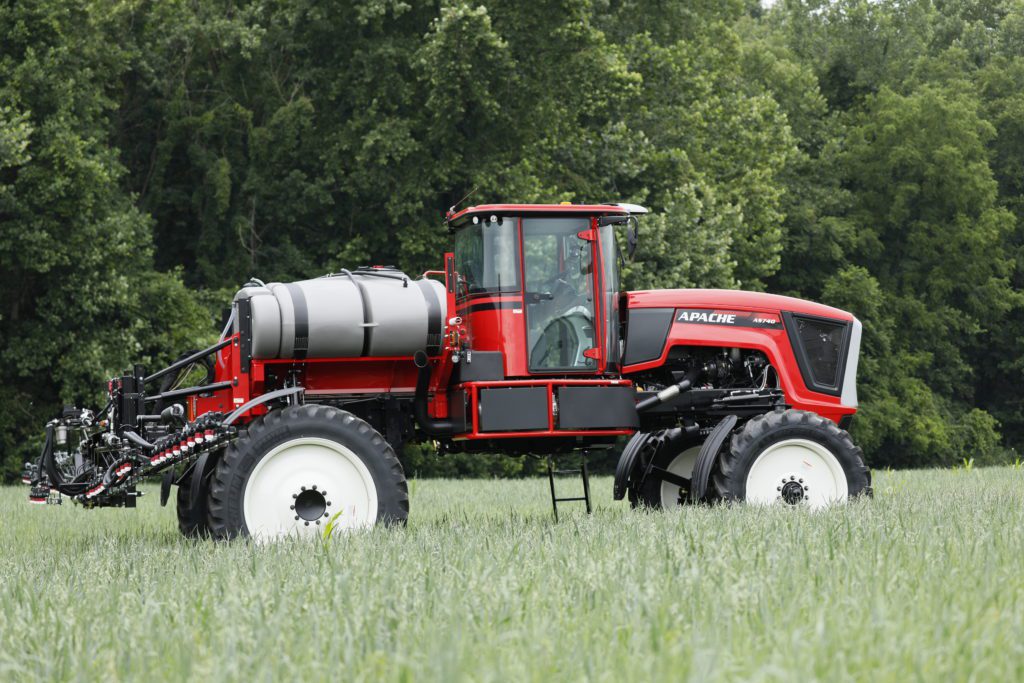How timing affects herbicide application rates
A wet start to crop planting and growing seasons — like the one farmers in many parts of the country have faced this year — has created several herbicide application issues that could lead to weed control challenges later on.
Excessive moisture in the form of both snow and rain turned fertile fields into lakes earlier this spring, with some areas facing massive and costly devastation to land and crop infrastructure. Beyond that high-profile damage, excess moisture has cranked up the pressure for farmers to get everything done in the field — fertilizer applications, tillage, planting and herbicide applications — before the clock runs out.
The good news is that equipment and technology are boosting productivity in the field for many field operations; for example, farmers can plant a lot more corn in a tighter time window today than even just a few years ago. But in many cases, Mother Nature ultimately decides how much work will get done and how fruitful those labors will be.
A pair of weed control problems
Those conditions have caused one of two weed control problems for farmers entering summer. First, farmers were pressed for time and were unable to get pre-emergence herbicides applied before planting. Secondly, others encountered wet conditions after planting when post-emergence herbicides would normally be applied.
If you’ve faced a general delay in applying herbicide, it’s likely your crop — and the weeds you’re targeting — will be further along developmentally. This will make it critical to account for that development through scouting and checking herbicide labels before turning a wheel on your sprayer.
“Wet weather can result in weeds and crops that are larger and more advanced in growth stage than anticipated,” according to a report from Ohio State University Weed Management Specialist and Professor Mark Loux. “The larger crop is primarily a problem in corn, where a more advanced growth stage can start to limit herbicide options.”
Herbicide application rates dependent on spraying crops and weed control
Rates may need to be adjusted based on the size of both your crop and invasive weeds, as well as any correlated changes in plant uptake of applied chemicals.
A late, rain-delayed start typically requires increased rates of herbicide application, especially in Roundup Ready and LibertyLink fields, and some grasses that would ordinarily be controlled well by glyphosate alone may require an additional clethodim product, Loux said. In cases with high populations of giant ragweed and other weeds that have shown signs of developing herbicide resistance, it’s advisable to apply the maximum recommended rate. Also consider mixing other products labeled for controlling weeds like giant ragweed to add to a full-rate glyphosate application.
Though he recommends full rates and potentially adding a residual product if applying herbicides late, especially in soybeans, Loux said it’s important to observe the required re-crop interval. This will prevent any unintended residual adverse effects on next year’s crop.
“While we advocate strongly for the use of residual herbicides in soybeans, the need for full rates of residual premix products applied in late June is debatable. Some residual herbicide labels specify a 10-month or greater interval between application and corn planting next year; and we are through the period of peak weed emergence, so the residual herbicide activity does not have to last as long, assuming that post herbicides will be applied,” Loux said. “In addition, soybeans grow more rapidly when planted in late June compared with early May, so there is less time until a crop canopy develops to help with weed control.”
In general, it’s critically important in examining both primary and alternate pre- and post-emergence herbicide options to closely read product labels to ensure you’re both applying a product that will be effective and preventing any unintended residual effects that could harm crop output potential in the short and long term.
If you’re facing wet spraying conditions this spring, here’s more help to make sure you’re spraying the right way.



